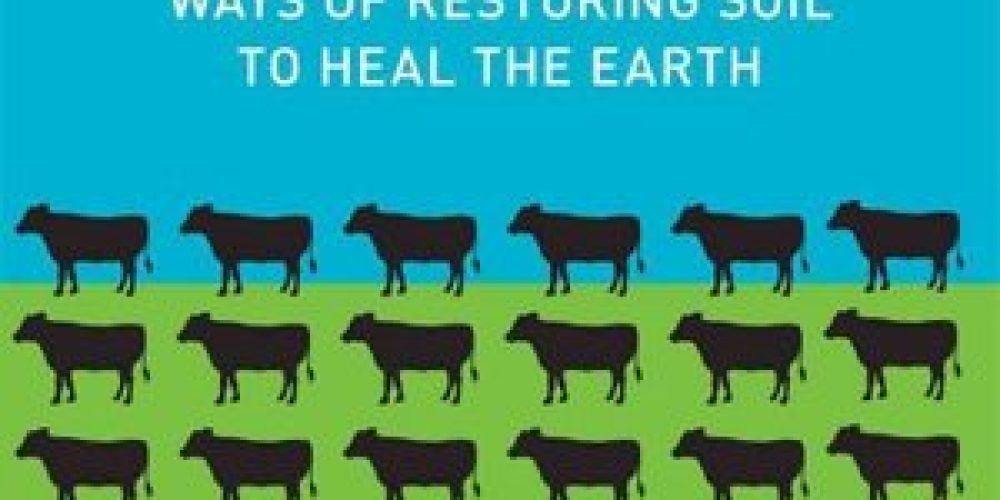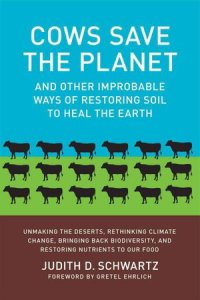This is a great 15-minute clip we found on NPR with one of our moderators for the Urban Soil Carbon Water Summit.
“Journalist and Author Judith Schwartz profiles the work of Allan Savory, among others, in a new book called “Cows Save the Planet: And Other Improbable Ways of Restoring Soil to Heal the Earth” and joins us now from Northeast Public Radio in Albany, New York. Nice to have you with us today.
JUDITH SCHWARTZ: Thanks. Great to be here, Neal.
CONAN: And at the same time, cows can both bury the carbon and restore the topsoil. Sounds too good to be true.
SCHWARTZ: Oh, well, it’s actually amazing. The book is really a book about soil. Soil is a hub for so many of our environmental, economic and social crisis, and for solutions. And in the process of all my research, I found that when you look at our situations, our various situations, from the standpoint of the soil, everything turns around. It almost allows for a radical reframing of our problems such as, as you mentioned, climate change.
CONAN: And really though, the soil is the key to all of the many different problems we have, including climate change and carbon dioxide and the various other problems?
SCHWARTZ: OK. Well, let’s look at excess CO2 in the atmosphere. OK. So the thing to realize is that while we think about this as a sky thing, that it’s all about all the fossil fuels that we’re burning and all that spewing into the atmosphere is actually also a ground thing. So if you look over time, way, and I mean way more carbon has gone into the atmosphere from soil, from the way we treat the soil compared to the burning of fossil fuels. And once you start to understand this and you understand the processes that release carbon into the atmosphere – you know, so the carbon, I mean, it’s heavy tillage. It’s leaving soil bare. It’s interrupting the life in the soil. It’s all these things – soil drying out. Then you can understand that you can actually reverse those processes and, by so doing, bring carbon back into the soil.
So over time, we’re talking gigatons of carbon that’s gone into the atmosphere from the soil. And what’s so exciting about this is that this is something we can do. It just concerns me that when we see these numbers, you know, we look at the Keeling Curve, the concentration of carbon in the atmosphere going up, up, up. I mean, we just…
CONAN: Yeah, the famous hockey stick chart.
SCHWARTZ: Exactly. And, you know, us as individuals, we can only watch this happen, and we can only just shake our heads as carbon global discussions just don’t seem to go anywhere. But if we look to the soil, then we can actually do something about it.
CONAN: So where do the cows come in?
SCHWARTZ: Aha. So you mentioned Allan Savory and his work for holistic management, holistic plant grazing, which is the use of livestock as a tool for large-scale land restoration. Basically, the thing to keep in mind is that any time you have animals on land those animals have an impact on the land, and that can be either a positive or negative impact, depending on how those animals are managed.
And when you manage livestock in a very precise way, then – moving them, as Allan said on that little clip – then they serve as biological accelerators, which means that they’re kind of kickstarting and keeping moving the biological processes that bring carbon into the soil.”
For more on this conversation and for the audio recording go to www.npr.org



